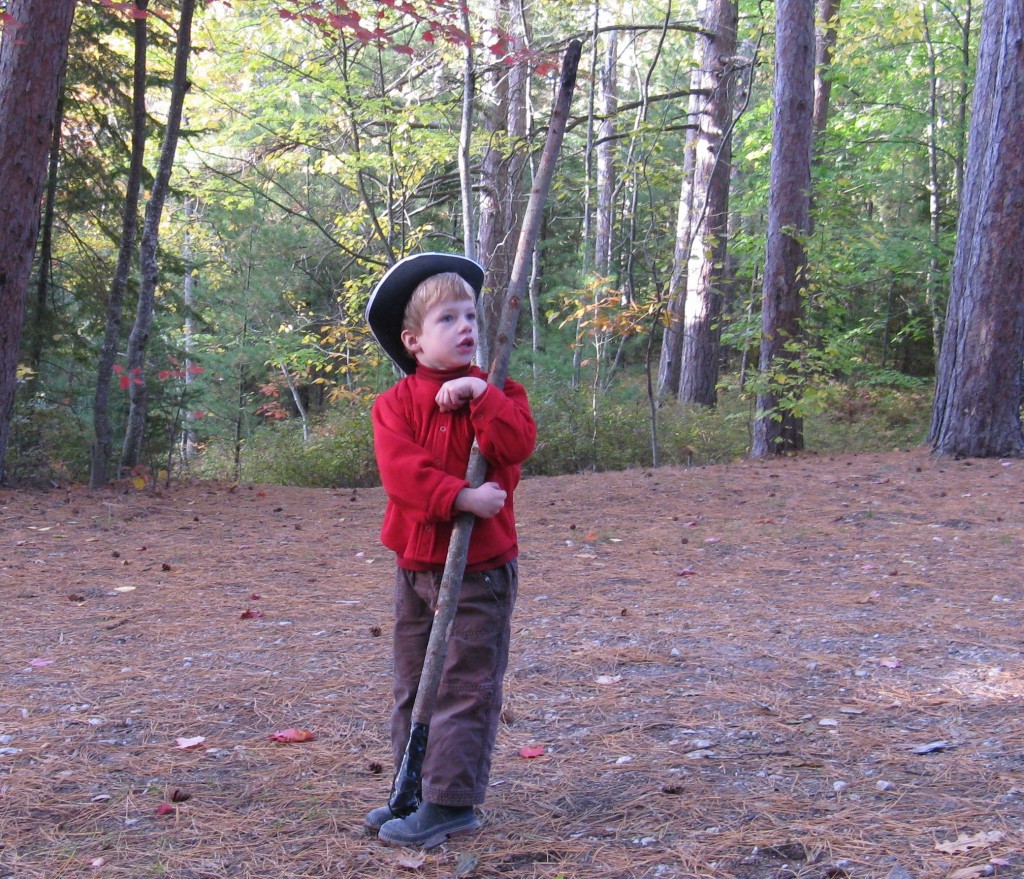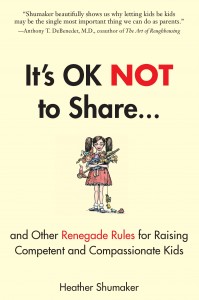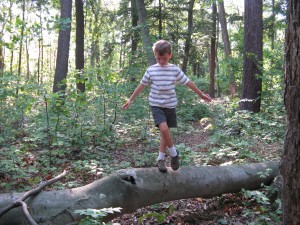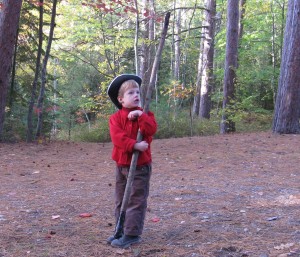
The Simple Stick continues to be one of the best toys.
My son is never without a stick in his hand. Or five or six. Some days it’s a cane. Usually it’s a sword or gun. Yesterday he made sticks into arrows by decorating the tips with beech leaves. Sticks make forts, pretend campfires and real ones. They sail down streams as boats. They draw in the sand.
I watched a daycare outing to the park the other day. Everywhere little hands grabbed sticks. “Put those down! No sticks!” came the voice. It would have been easier to have banned the children from the playground equipment. The playground slide was ho-hum. The sticks were irresistible.
The lowly Stick is so universally popular that officials at Rochester’s National Toy Hall of Fame have inaugurated the Stick as one of childhood’s prize toys, based on universality, longevity and creativity. Everywhere the world round, children love sticks.
Stick play also scares many grown-ups. Sticks evoke danger (“you’ll put your eye out!”), conflict (“OK, that’s enough you two!”) and violence (“that’s not a gun, that’s a magic wand.”).
I say put life first and safety second.
Put creativity first and worries last.
Welcome social play and understand that social interaction includes conflict.
Teach nature’s realities but don’t vilify them.
Danger and risk. We focus on the wrong dangers. Riding in a car is statistically much more dangerous, yet we think nothing of taking our child for a ride. Yes, I do know of people who have lost vision in accidents to sticks and other objects. Life is not completely safe. It is better that we live than that we never have a chance to live at all.
Conflict and opportunity. When someone swings a stick too close to another person, there’s certainly conflict. But instead of shutting down the game because conflict “might” happen, embrace the opportunity. “Your stick is too close to his body. Where can you move so he will feel safe?” Stick play is one more opportunity to practice conflict mediation.
Violence and social play. Saying ‘bang’ with a stick gun is social play. It’s about creativity and social interaction, not violence. It’s the smiles and real-life behavior that counts, not the topic. (lots more about this in my chapter Bombs, guns and bad guys allowed.)
Of course, crossing swords with sticks isn’t everyone’s cup of tea, and on days when my 4-year-old hasn’t napped, he can’t hold it together. But when he’s well rested, crossing swords with sticks is high fun. It’s social play with a partner. It boosts brain power, too. Each player has to hit with just the right timing and power. The game is so much fun they’re both motivated to keep the game going. That involves reading social cues and emotions. It also takes great impulse control which reinforces brain development in the frontal lobe – which even benefits academics later on.
Nature as safe or dangerous. For kids who don’t get outside much, the great outdoors is sometimes presented as terrifying. “Don’t touch that – it might be poison ivy!” “Stay on the path – you don’t know what might be out there.” And of course, “Put down that stick!” Nature is neutral. We need to give kids enough experience so they know how to respond. Ex: wet logs are slippery, sticks can hurt, rocks can tip, branches can snap.
And face it, sometimes we also feel oddly guilty when our children prefer a simple stick to the expensive toy ignored in the living room.
It bears keeping in mind especially at this season. Which toys that you buy will be as treasured and versatile as the simple stick? Kids need space and time and freedom to play more than they need extra toys. Bypass the toy store. Instead stop by an appliance store for a huge empty cardboard box. The Cardboard Box is also in the Hall of Fame.
Should safety always be first? Do you let kids play with sticks? How do you balance safety and risk in nature or in other areas of life?
 If you like what you're reading here, you'll find more of the same - plus pages of practical tips for parenting active, emotional, normal, lovable kids - in my book It's OK NOT to Share...And Other Renegade Rules for Raising Competent and Compassionate Kids (Tarcher/ Penguin 2012).
If you like what you're reading here, you'll find more of the same - plus pages of practical tips for parenting active, emotional, normal, lovable kids - in my book It's OK NOT to Share...And Other Renegade Rules for Raising Competent and Compassionate Kids (Tarcher/ Penguin 2012).

